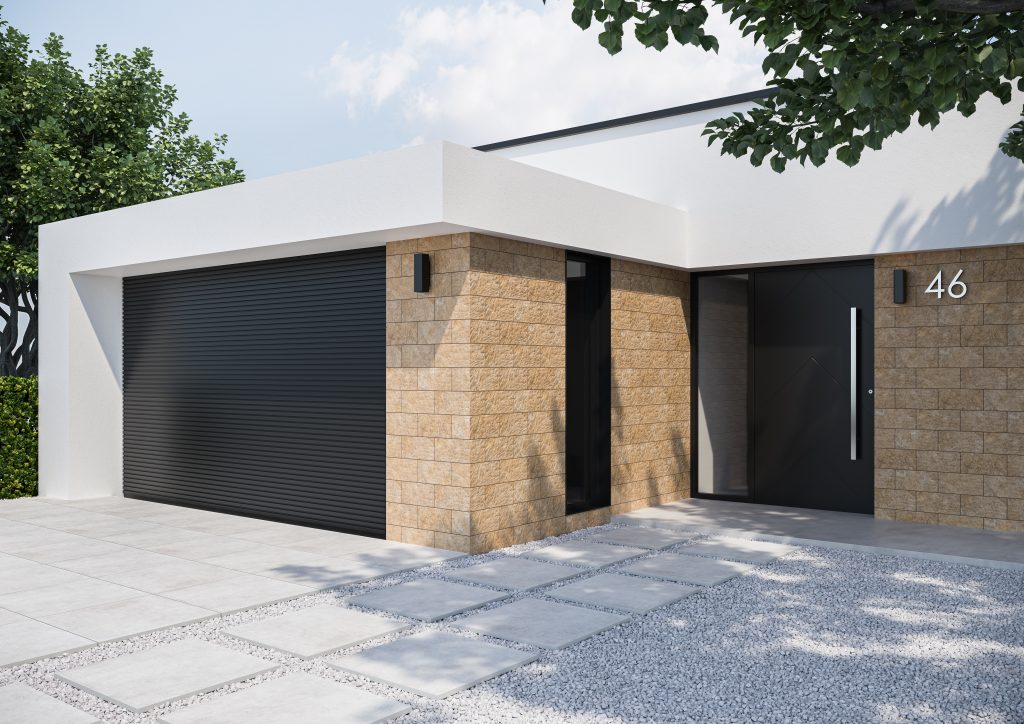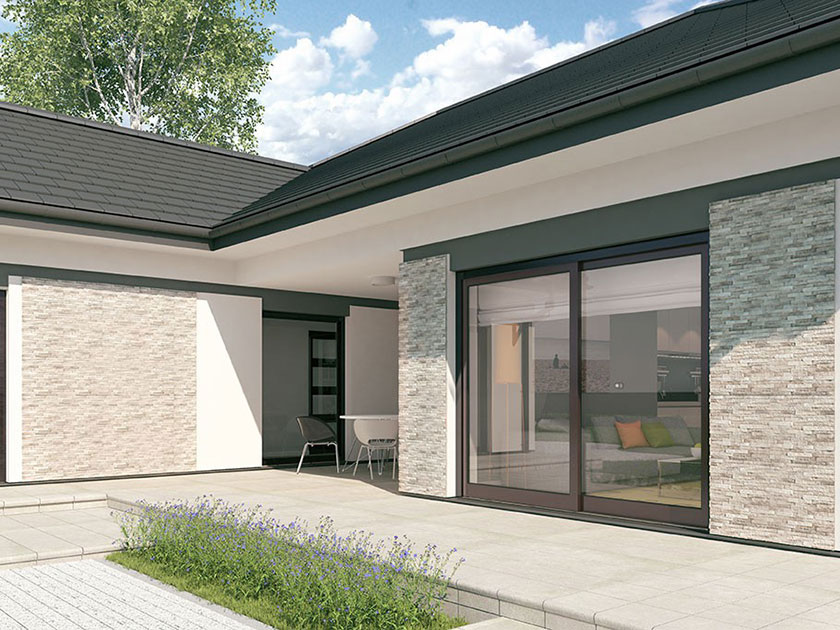The unique Mediterranean style, which practically smells of sand, sea breeze, and vacations, is the true essence of joy and relaxation. Interiors designed in this theme offer a wonderful aesthetic experience, but equally intriguing can be the Mediterranean-style façade, giving a building an amazing atmosphere. How can you create it, and what should you use to transform your home into a summer oasis?
What defines it?
Mediterranean style draws inspiration from sunny summer days, simplicity, relaxation, and happiness. This unpretentious yet remarkably elegant architectural style is reminiscent of designs from seaside villages and towns. The Mediterranean interior trend, based on Greek, Spanish, and Italian traditions, captivates with a wide color palette, interesting decorations, and the feeling of open spaces always ready to welcome guests.
This extraordinary design trend is typical of countries around the Mediterranean Sea, which enjoy a particularly mild climate. The architectural style of this region combines simplicity with solutions that bring people closer to nature. Homes are well-lit, and the materials used—especially brown and beige stone—are meant more to cool interiors rather than warm them.
The Mediterranean style is characterized by large spaces, majestic windows, and bright walls and floors adorned with cobalt, azure, and emerald accents, golden decorations, and lush greenery. Interiors designed in this style also feature stone, stunning ceramics, beautiful mosaics, and wooden furniture and decorations. A hallmark of this interior trend is light, airy curtains and the omnipresent earthy tones that give spaces a very natural feel. Interiors are complemented by beautiful woolen carpets, decorative pillows, sculptures, and kilims, while Mediterranean-style façades with eye-catching woodwork appear almost magical.
What defines a Mediterranean-style façade?
The character of Mediterranean house façades is inseparably connected with the features of the hot, coastal climate. Façades are typically white, and sometimes cream, beige, or pastel. The use of such light colors naturally reflects sunlight, helping to reduce interior heat to some extent, and, according to beliefs, it also protects residents from evil.
The roofs and woodwork are highly contrasting—usually cobalt or azure—which creates a phenomenal effect reminiscent of the Smurf village. In the past, old homes in the coastal villa style were built from light stone, but today, traditional building materials are used, and façades are covered with plaster and traditionally whitewashed just before Easter.

In their most unique form, façades in the style typical of the Mediterranean region feature pastel shades. Warm, burnt browns, beiges, ochres, and sienna are popular. In Polish conditions, few people are ready to opt for such a look for their home, though there is a growing trend of designing summer cottages in this style, serving as a foundation for full-scale projects.

What materials work best for a Mediterranean-style façade?
A Mediterranean-style façade in Polish conditions can be a real attraction. If we take the subject seriously and implement the traditional Greek style, no one will pass by the building without noticing its magnificent design.
The simplest way to achieve a Mediterranean façade is by using light, preferably white exterior plaster, which looks perfect against a light gray roof and woodwork in the same shade, as well as gray or beige exterior tiles. If the owner is bold enough, they can take it a step further and implement the traditional style with its characteristic blue roof and colorful woodwork. In such a case, the best approach would be to choose doors and windows in a bicolor version, with different interior and exterior colors, ensuring that the striking exterior look doesn’t clash with the interior décor.
Decorative elements, such as niches or plinths, are best lined with exterior tiles imitating stone. Wall tiles like Torstone brown with beige decorative mosaics or Canella steel tiles, which look as if they were made from natural cut stone, would be ideal. If the design is to look like it’s made of sandstone, modern Kallio cream exterior tiles are a great choice.
A Mediterranean-style façade comes in many forms. A white base combined with eye-catching blue decorative elements and abundant greenery is the true essence of this beautiful style. It’s worth embracing the Mediterranean trend to refresh your building and give it a joyful atmosphere.






 This website uses cookies to improve your experience when navigating. They include cookies classified as necessary, and they are stored in the browser as they are necessary for the operation of the basic website functions. We also use third-party cookies that help us to analyse and understand the way you use the website. Such cookies will be stored in your browser only upon your consent. You can also resign from these cookies. However, if you resign from some cookies, it may affect your comfort when browsing.
This website uses cookies to improve your experience when navigating. They include cookies classified as necessary, and they are stored in the browser as they are necessary for the operation of the basic website functions. We also use third-party cookies that help us to analyse and understand the way you use the website. Such cookies will be stored in your browser only upon your consent. You can also resign from these cookies. However, if you resign from some cookies, it may affect your comfort when browsing.